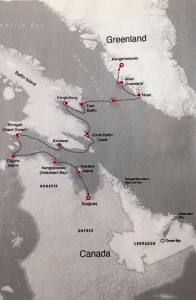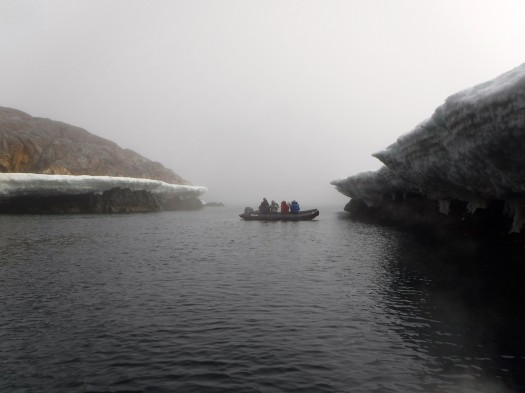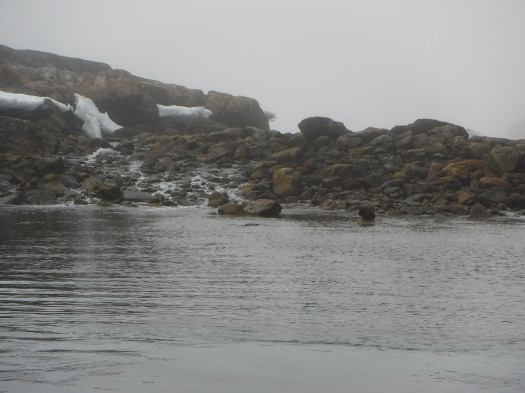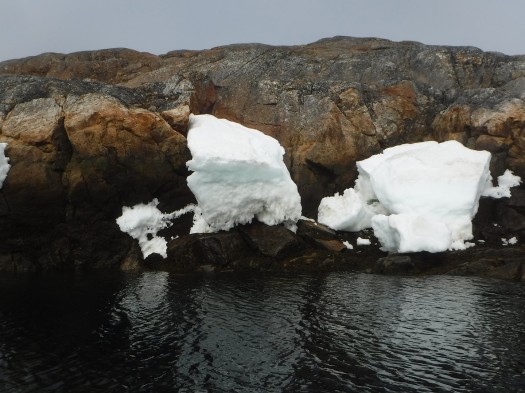A Placemaking Journal
Lower Savage Island: Heart of the Arctic Day 7
Thursday, July 23, 2015
Leaving Kimmerut, we headed for Baffin Bay, anchoring at Lower Savage Island just at the end of Frobisher Bay. We spent a couple hours on the zodiacs, not able to set foot on the island due to the possibility of polar bears and walrus. We were hoping to see walrus from the ship as we circumnavigated the island, and polar bear while going through the interior channels on the zodiacs.
However, luck wasn’t with us, and the only wildlife we saw were birds through a heavy fog. The interesting rock formations, sea ice, icebergs, birds, and cold Arctic air made up for it.
Savage Island has channels, big bays, and fjords running through it, thanks to fault gauge. Along the faults we saw amazing colors, because of the magnetite and other minerals run through the faults.
While waiting for the fog to lift, a number of onboard talks kept us company. What’s the difference between whale and dolphin? Size. They’re in the same family.
Cetaceans are whales, dolphins and porpoises. An orca or killer whale is actually in the dolphin family. “Cetacean” means sea monster, and the whales are the biggest.
Killer whales have the same size teeth as the tyrannosaurus rex, and strike fear in the hearts of other cetaceans. One of our scientists told stories of a seal trying to climb into a boat when a killer whale was close-by. Other whales will go close to the shore and be very quiet with no songs or vocalizations when killer whales are around. There are about 77 species of toothed whale, and about 11 species of non toothed.
Bowhead, beluga and narwhal whales spend winter in the Arctic. The ice edge is a very rich place, where sun can penetrate so that algae feeds smaller organisms, a sumptuous feast for the whales. One bowhead whale can keep a whole village in food, clothing, and heating oil for almost a year.
We delved further into the contemporary Inuit art. The Inuit prefer the term carvings to sculptures, and carvers to sculptors. There is no word in Inuktitut for “art,” but it’s rather called “visual image.” Shelia and Jack Butler from Winnipeg helped set up printmaking at Baker Lake, on which she says: “The object’s aesthetic value is more important when we think of the economic necessity.” More Inuit per capita produce art than any other culture on earth. Sheokjuk Oqutaq from Cape Dorset would say, “I have built houses and I have built boats. Making a carving is harder than both. Especially when the stone is hard.”
To read the entire Heart of the Arctic series, go here.
–Hazel Borys
If PlaceShakers is our soapbox, our Facebook page is where we step down, grab a drink and enjoy a little conversation. Looking for a heads-up on the latest community-building news and perspective from around the web? Click through and “Like” us and we’ll keep you in the loop.















